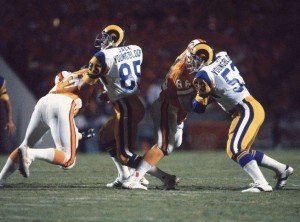Four Athletes Who Played Through Serious Ankle/Leg Injuries 0
A serious leg injury, particularly one in a key joint like the ankle or knee, reduces mobility to almost zero and brings an intense wave of pain. To study some of the technical details, check out https://www.vivehealth.com/blo
Shun Fujimoto, 1976 Montreal Olympics
Fujimoto was a 26-year-old Japanese gymnast when he competed with the national team at the XXI Olympiad. These were the first games played under the International Olympic Committee’s new rules that limited the number of participants. The clear intent was to level the playing field for smaller nations by keeping some prominent gymnasts from countries like the Soviet Union on the sidelines. Nevertheless, the USSR was still favored to win gold in the men’s team competition.
After taking a nasty spill during his floor exercise, Fujimoto fractured his knee. Nevertheless, he competed in both the pommel horse and the rings, earning marks of 9.6 and 9.7. At the end of his rings routine, his dismount aggravated his injury and doctors said that he risked permanent disability if he did not withdraw. Japan won the team gold over the Soviet Union by 0.4 points.
At the time, Fujimoto said that he stayed in so he would not let his team down. Some time later, when someone asked him if he would do it again, Fujimoto flatly replied “No.”
Jack Youngblood, 1979 NFL Playoffs
Coming off a year in which he had a career-high eighteen sacks for the Los Angeles Rams, Youngblood broke his leg in the second quarter of the Rams’ first playoff game against the Dallas Cowboys. But he stayed in the lineup for the team’s entire playoff run that went all the way to Super Bowl XIV. Later in that playoff game, Youngblood came up with a critical sack of quarterback Roger Staubach in the game’s waning moments, with the Rams desperately clinging to a 21-19 lead.
Youngblood was in the starting lineup for the Rams’ 31-19 loss to the Pittsburgh Steelers. He even played in the meaningless Pro Bowl on that same broken leg, but that might have been because the 1980 version was the first Pro Bowl to be played in Hawaii. Read the rest of this entry →





